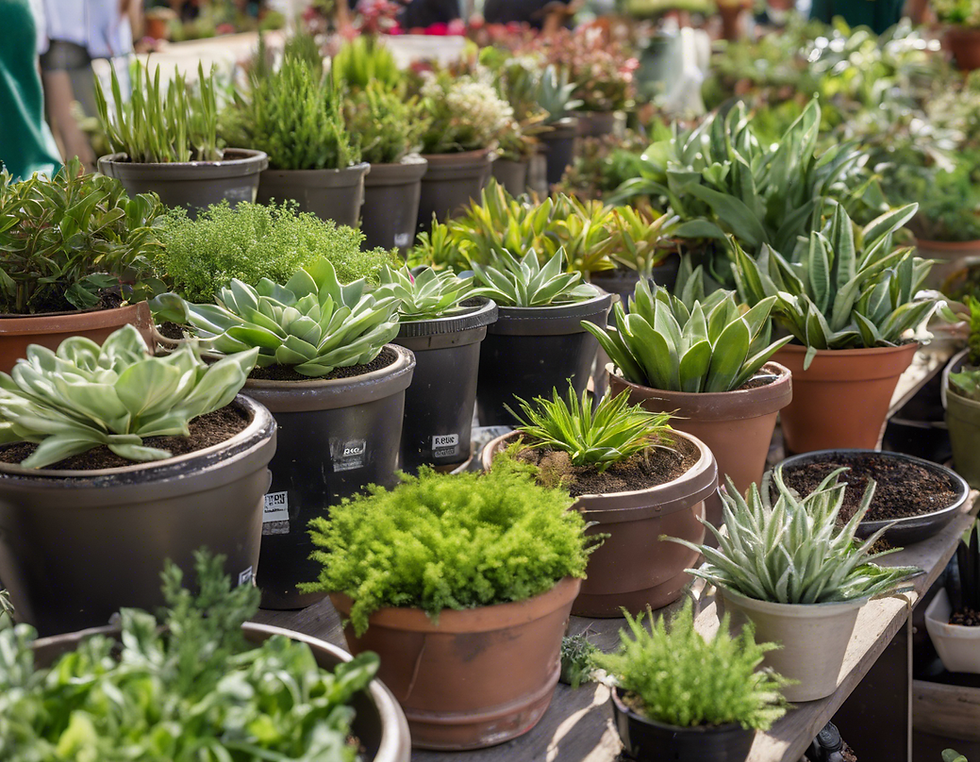Signs Your Houseplant is Overwatered and What to Do About It
- nitasnaturalssbe
- Aug 22
- 3 min read
Updated: 3 days ago

Of all the ways doting plant parents struggle with their beloved greenery, overwatering consistently ranks as the most significant issue. This is a common predicament that many plant enthusiasts face, often stemming from the desire to provide the best possible care for their plants. In their eagerness to nurture and support growth, plant caregivers sometimes inadvertently drown their plants, leading to a host of problems that can manifest in various signs and symptoms.While the intention behind overwatering is rooted in love and care, it can ultimately lead to detrimental effects on plant health. Overly saturated soil deprives roots of oxygen, which is essential for their survival and function. As a result, plants may exhibit several distress signals that indicate they are suffering from this condition.
To help you better understand the nuances of overwatering, here are some key signs to look out for, along with actionable steps you can take to remedy the situation:
Signs of Overwatering
1. Yellowing Leaves
One of the most common indicators of overwatering is the yellowing of leaves, particularly the lower leaves. This occurs because the roots are unable to absorb nutrients effectively in waterlogged conditions.
2. Wilting
Ironically, while overwatered plants can appear to be drooping or wilting, this is not due to a lack of water. Instead, the roots are unable to function properly, leading to a failure to take up water and nutrients.
3. Root Rot
A more severe consequence of overwatering is root rot, a condition caused by fungal infections that thrive in excessively wet soil. If you notice a foul smell or mushy roots when inspecting the root system, it is likely that root rot has set in.
4. Mold Growth
The presence of mold or mildew on the soil surface can also be a telltale sign of overwatering. This fungal growth indicates that the environment is too moist and not conducive to healthy plant growth.
5. Leaf Drop
If your plant starts shedding leaves unexpectedly, especially the lower ones, it may be a response to the stress caused by overwatering.
What You Can Do About Overwatering
1. Assess Watering Habits
The first step in addressing overwatering is to evaluate your watering routine. Consider how often you water your plants and whether you are allowing the soil to dry out adequately between waterings. A good rule of thumb is to check the top inch of soil; if it feels dry, it’s time to water.
2. Improve Drainage
Ensure that your pots have adequate drainage holes to allow excess water to escape. If your pots lack drainage, consider repotting your plants in containers that do or adding materials like perlite or gravel to the soil mix to enhance drainage.
3. Adjust Soil Composition
Using the right type of soil can make a significant difference in preventing overwatering. A well-draining potting mix is crucial for maintaining the right moisture levels. Look for mixes designed specifically for the type of plant you are caring for, as different species have varying moisture requirements.
4. Monitor Environmental Conditions
Factors such as humidity, temperature, and light can influence how quickly soil dries out. In high humidity or low light conditions, plants may require less frequent watering. Adjust your care routine accordingly based on these environmental factors.
5. Repot if Necessary
If you suspect root rot or severe damage, it may be necessary to repot your plant. Gently remove the plant from its pot, trim away any rotten or mushy roots, and place it in fresh, dry soil. This will help revive the plant and encourage healthy growth.
By understanding the signs of overwatering and taking proactive steps to mitigate the issue, plant parents can better care for their green companions. This knowledge not only enhances the health of individual plants but also fosters a deeper connection between caregivers and their cherished flora. Remember, the goal is to find a balance that allows your plants to thrive without the risk of drowning them in love.




Comments